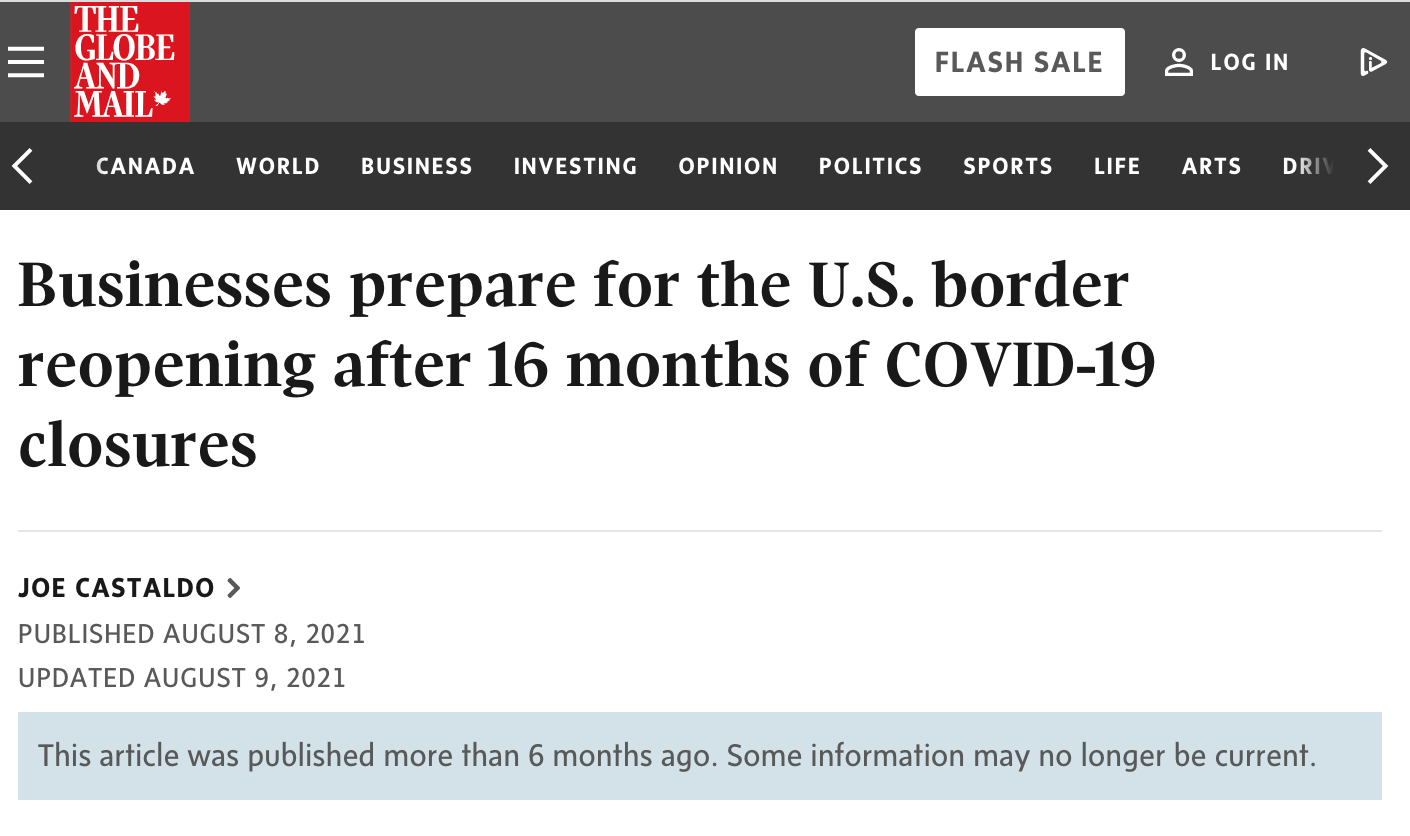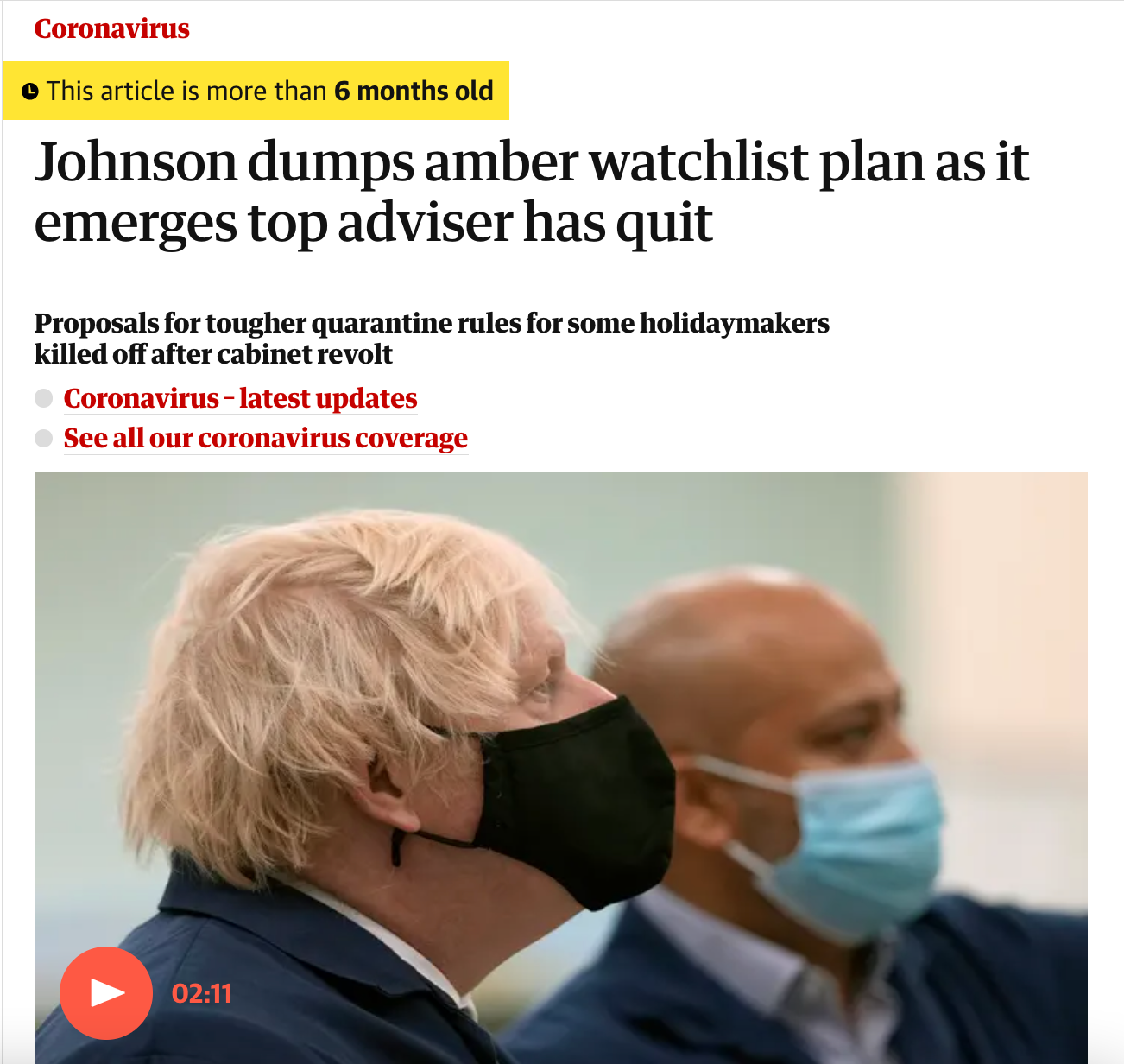As President Joe Biden was ramping up his campaign in the lead-up to the 2020 election, editors at The New York Times noticed something strange. An old Times story from 1987 was making the rounds on Facebook.
“BIDEN WITHDRAWS BID FOR PRESIDENT IN WAKE OF FUROR,” read the headline.
Though some people were sharing the story as a joke, it wasn’t immediately obvious to the casual social media user that the article was more than 30 years old. In link previews, Facebook displayed just the headline of the story, not the date.
An editor had to append the phrase “FROM 1987:” to the beginning of the headline to make it clear to readers that Biden wasn’t dropping out of the 2020 presidential election. The change worked, but it was a manual solution — one that relied on editors noticing traffic to older stories and then rewriting headlines.
This wasn’t the first time the Times had seen its old stories resurface on social media without context. That’s why it decided in October 2020 to automatically apply labels to link previews on social media, notifying readers when a story was published more than a year ago.
“This was our solution to take those (decisions) out of the hands of individual editors in the standards department and really just have a product solution for misinformation,” said Times deputy audience director Anna Dubenko.
These warnings have become more popular in the past few years, and news organizations are applying them to both social media posts and articles themselves. Some simply tell the reader how old the article is. Others are more prominent, using colored banners and additional language warning readers that information contained in the story may no longer be current.

A blue banner notifies readers that this Globe and Mail story may contain outdated information. (Screenshot/The Globe and Mail)
The Guardian was the first outlet to use these warnings, adding them to both news stories and social media posts in April 2019. They made the change after an audience editor noticed that after the Christchurch mosque shootings, far-right Facebook pages were sharing a five-year-old story about the bombing of a Christian church in Pakistan.
“None of them were saying that it was five years old,” said Chris Moran, the Guardian’s head of editorial innovation. “In fact, they were clearly intentionally covering it up — the people who first shared it — because they wanted to draw a false equivalence between two things which had happened at radically different times.”
Adding a bright yellow overlay with the date to the social media link previews essentially solved the problem overnight, Moran said. Since then, the Guardian has never seen another spike in Facebook traffic around an older article that is being shared misleadingly.

The Guardian applies bright yellow labels to all news stories that are more than six months old. (Screenshot/The Guardian)
Lynn Walsh, the assistant director of the Trusting News project, said that these “visual flags” help make understanding the news less confusing for consumers, which can build trust in the outlet.
“If we can be helpful to the consumer, that is one way to build trust with them and build that relationship,” Walsh said. “They know they can count on us to continuously give them information in a truthful, honest and upfront way.”
Walsh pointed out that news organizations have been doing versions of these warnings for years. For example, more and more news organizations are adding language to breaking news stories to let readers know that information may become outdated. Some outlets attach editor’s notes to updated stories.
What is new, however, is outlets applying the warnings consistently across all of their old stories.
News organizations vary in their strategies for notifying readers. BuzzFeed News and The New York Times, for example, only affix the labels to social media posts, not the articles themselves. Dubenko said the Times chose this route because the main way people access outdated articles is through social media. Plus, the Times has many evergreen stories that are still relevant, and adding a warning to those pages would be “a little overkill.”

(Screenshots of tweets from The Guardian, BuzzFeed News and The New York Times)
The Globe and Mail, which adds disclaimers to article pages more than six months old, uses keywords to exclude evergreen content like explainers and certain features from its system. The Guardian only applies the labels to news stories and decided against expanding to other sections due to worries that overuse would desensitize readers.
“My thinking was that if you start to flood every image with that date and every single piece of our content on social platforms start to have a date attached, you also run the risk of blinding people to when it is most important,” Moran said.
Reader feedback to The Guardian’s labels has been positive, Moran said. He has seen other European outlets implement their own warnings for old content, which he believes improves the general news ecosystem. His only disappointment is that Facebook hasn’t done more to make articles’ publication dates transparent.
At The New York Times, some were worried that the labels on social media would discourage people from clicking articles, but these concerns never manifested, said Dubenko. She added that there haven’t been any downsides.
“We know people read just the headline or just the social copy, and the more information we can give, the better,” Dubenko said. “It’s responsible news practice to contextualize the news in the most efficient way we possibly can because we don’t want people weaponizing our journalism for misinformation or disinformation.”








Is it possible to know what type of automations these sites are using? Plugins? Specially built? If we’re small newsrooms without the tech skills of the New York Times and the Guardian, is this something possible for us? And would it even be necessary for us?